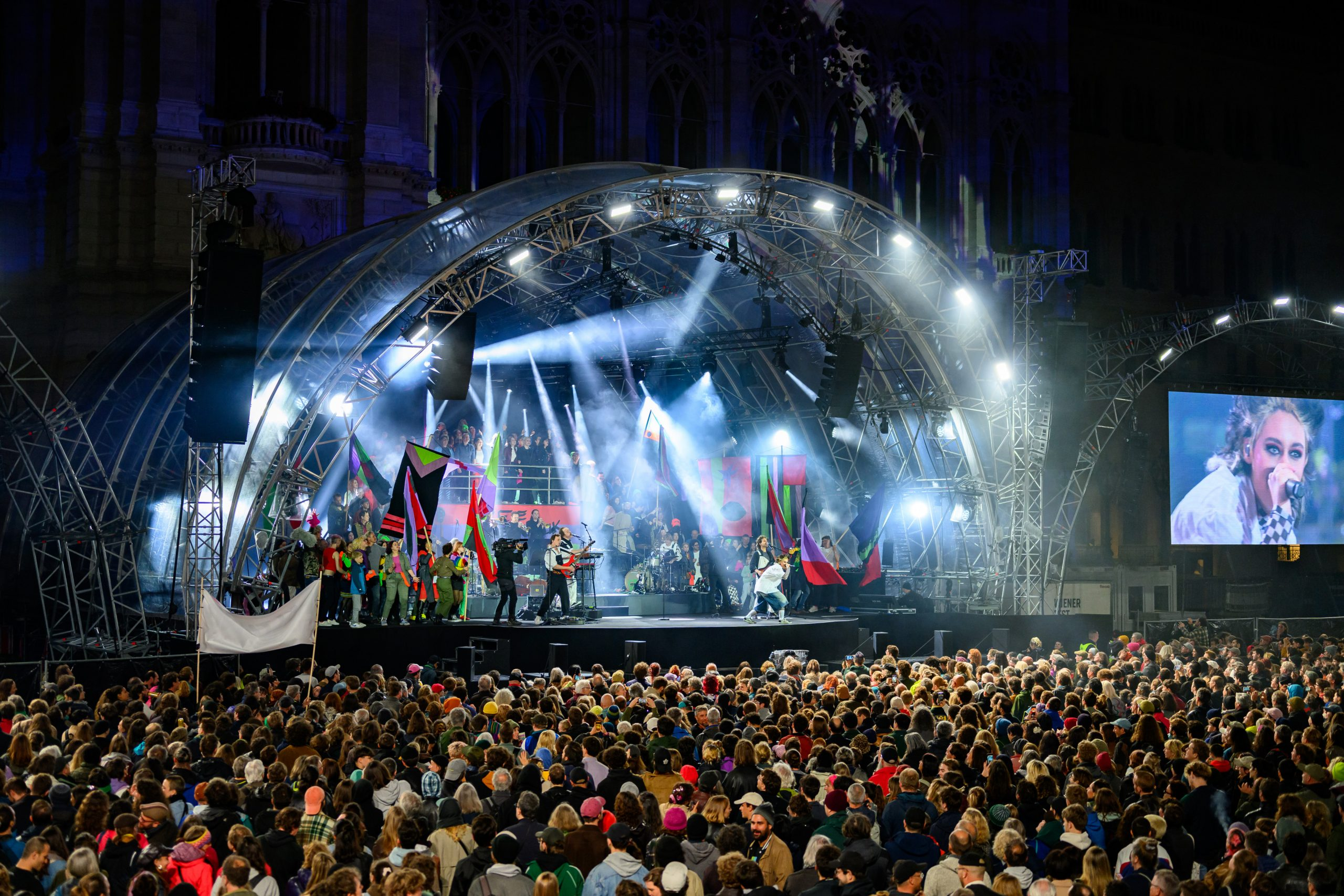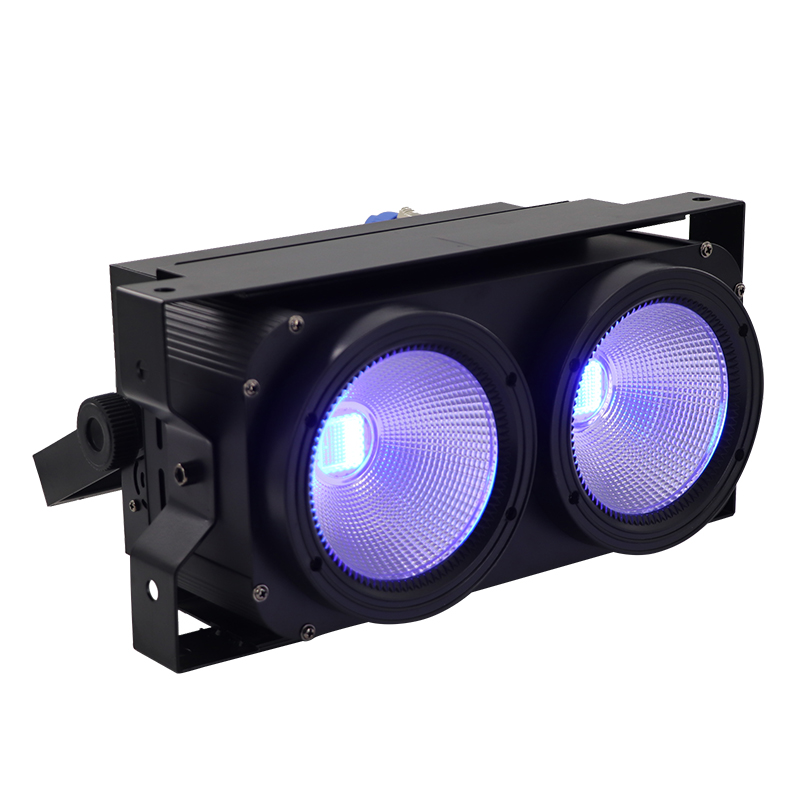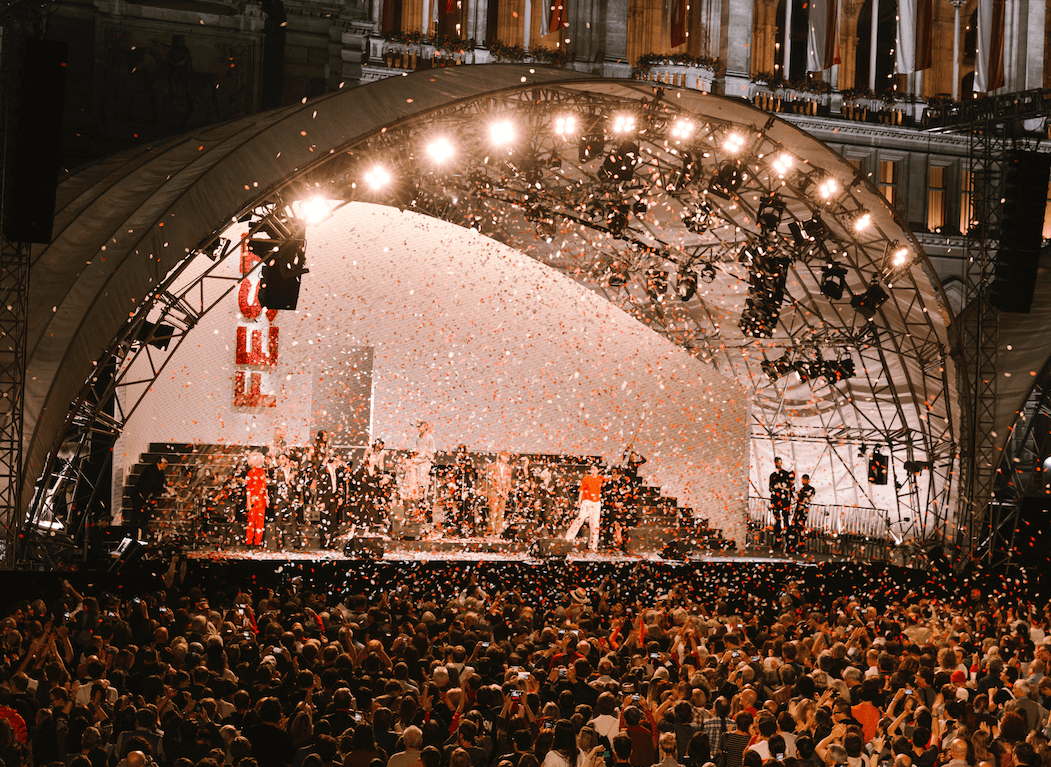Evolving the Art Festival Experience
Modern art festivals are no longer just about passive viewing. Immersive experiences and audience engagement are becoming central design priorities. Lighting is evolving to respond not only to the architecture of a space but also to the energy and movement of the people within it. One of the most compelling developments in this space is the use of audience-interactive lighting zones, designed to respond in real time to participant behavior and interaction.
At the forefront of this transformation are fixtures that combine color precision, movement, and pixel-based control. Among the most effective tools for this purpose are the 2x100W RGB Audience Spotlight and the 5x120W Tornado Moving Head—two fixtures engineered to turn static installations into living, breathing environments.

The Rise of Audience-Interactive Lighting Zones
Interactive lighting zones are areas where lights are programmed to react dynamically based on crowd behavior, input triggers, or real-time sensor data. Whether using motion sensors, app-based input, or audio triggers, these zones elevate the sensory experience for festivalgoers. Interactivity transforms lighting from a background effect into an active participant in the show.
The success of such zones hinges on choosing fixtures that are both expressive and responsive. Color accuracy, strobe capability, beam directionality, and individual pixel mapping are all essential traits.
Spotlight Feature: 2x100W RGB Audience Spotlight
At the heart of many interactive zones is the 2x100W RGB Audience Spotlight. Unlike traditional blinders, this fixture is designed to provide both punchy light output and rich, programmable color control. With two independent RGB COB LEDs, it allows festival designers to create blinder effects that pulse, sweep, or chase across the crowd in sync with music or movement.
The 2x100W RGB Audience Spotlight is IP-rated and built for durability in outdoor environments. It integrates easily into lighting networks using standard DMX or Art-Net control protocols and offers flicker-free output—crucial for video documentation of the festival.
When mounted strategically—along stage edges, overhead trusses, or boundary walkways—the 2x100W RGB Audience Spotlight delivers an immersive glow that bridges the physical and emotional gap between performer and audience.

How Audience Blinders Can Engage Without Overpowering
Audience blinders historically have been about intensity—momentarily blasting the crowd with a rush of white. However, with RGB capability, fixtures like the 2x100W RGB Audience Spotlight bring nuance. Designers can create color pulses that mimic crowd claps, follow audio triggers, or reflect mood shifts during performances.
Because it’s compact and efficient, the 2x100W RGB Audience Spotlight also works well for lower trim heights, gallery ceilings, or temporary indoor pavilions. Its passive cooling and wide beam angle contribute to consistent, audience-friendly illumination.
Dynamic Motion: 5x120W Tornado Moving Head in Action
Complementing fixed blinders with motion-enhanced fixtures brings another layer of depth. The 5x120W Tornado Moving Head is a high-output RGBL fixture with five individually controllable light sources arranged in a radial pattern.
Designed for versatility, the 5x120W Tornado Moving Head excels in sweeping effects, multidirectional beams, and animation-like transitions. When integrated into interactive zones, it can respond to audience movement—scanning the crowd, framing installations, or creating “light chase” effects that follow guests across space.
Its robust IP rating makes it suitable for outdoor art installations that must endure varied weather conditions while maintaining high performance.
_Svmnqe.jpg)
Color Mapping and Zone Control for Interactive Shows
One of the key features that make both the 2x100W RGB Audience Spotlight and the 5x120W Tornado Moving Head ideal for art festivals is pixel control. Pixel mapping allows each LED or light segment to be addressed individually. This creates detailed lighting patterns—moving rainbows, color gradients, waveform-style animations—that react seamlessly to external input.
For example, if an audience member claps, a sound trigger might initiate a pixel wave across a row of 5x120W Tornado Moving Head fixtures. Similarly, a motion sensor can trigger a burst from a 2x100W RGB Audience Spotlight, making the light environment feel alive and intelligent.
Wireless Flexibility and Fast Setup for Temporary Venues
Pop-up installations and temporary art environments benefit from fixtures that are quick to deploy and easy to network. Both the 2x100W RGB Audience Spotlight and the 5x120W Tornado Moving Head support fast setup through DMX over wireless protocols, especially when paired with battery-powered units for low infrastructure environments.
Since many interactive lighting zones are placed in unconventional spaces—on walkways, among sculptures, or embedded into architecture—this wireless and compact flexibility becomes critical.
Technical Considerations: Sync, Safety, and Protocols
Ensuring responsive interactivity requires precise sync across lighting protocols. These fixtures offer DMX512 and advanced RDM functionality, which allows for remote configuration and monitoring. The 5x120W Tornado Moving Head includes fan speed control and temperature sensors, while the 2x100W RGB Audience Spotlight supports fast strobe for high-energy effects.
Both units comply with CE and RoHS safety standards—important for public installations.
Case Examples: Interactive Installations in Practice
At the “Pulse Garden” installation during a summer art fair, designers used 2x100W RGB Audience Spotlight units buried beneath transparent grates. As visitors walked over them, sensors triggered color bursts beneath their feet.
In another case, an urban festival deployed a circle of 5x120W Tornado Moving Head fixtures programmed to follow crowd movement in concentric zones. The result was a mesmerizing dome of shifting light arcs.
These real-world examples highlight how such fixtures not only elevate aesthetics but encourage social connection through interaction.

Conclusion: Lighting as an Interactive Storytelling Medium
Audience-interactive lighting zones are no longer novelties—they’re design necessities for modern art festivals. By choosing fixtures like the 2x100W RGB Audience Spotlight and the 5x120W Tornado Moving Head, designers gain the flexibility, power, and precision required to transform passive spectators into active participants.
From colorful crowd pulses to sensor-driven motion effects, these fixtures enable immersive narratives where light becomes part of the story itself.
READ MORE:





Blue Sea Lighting is an enterprise with rich experience in the integration of industry and trade in stage lighting and stage special effects related equipment. Its products include moving head lights, par lights, wall washer lights, logo gobo projector lights, power distributor, stage effects such as electronic fireworks machines, snow machines, smoke bubble machines, and related accessories such as light clamps.
Quick Links
For more questions subscribe to our email








